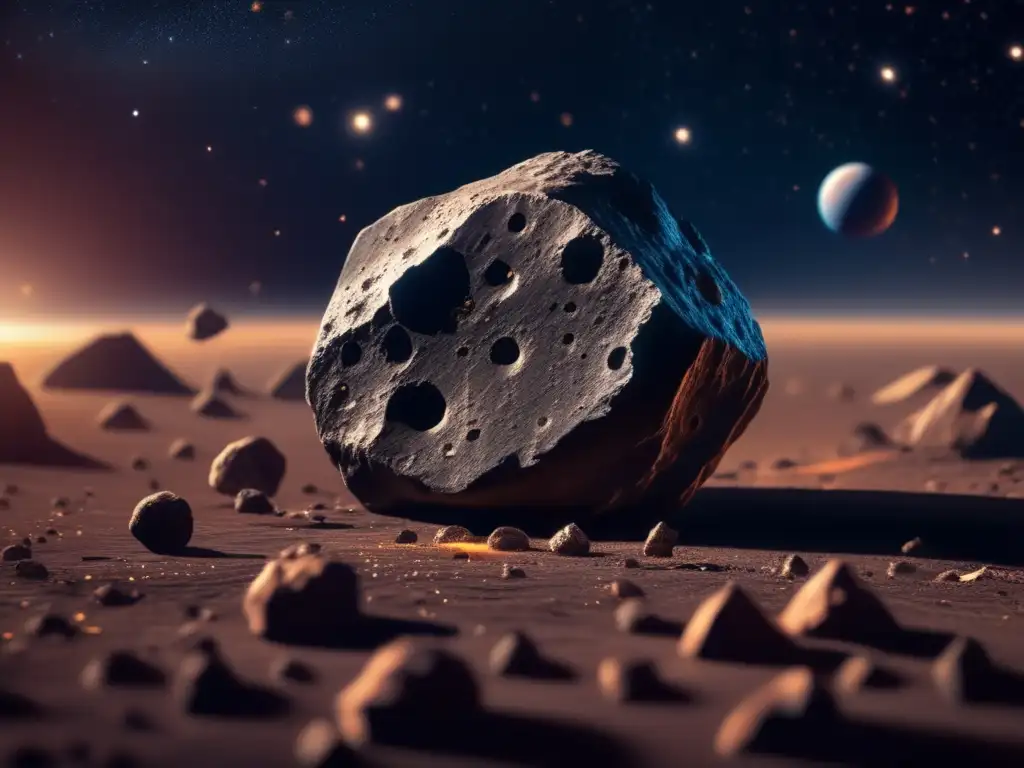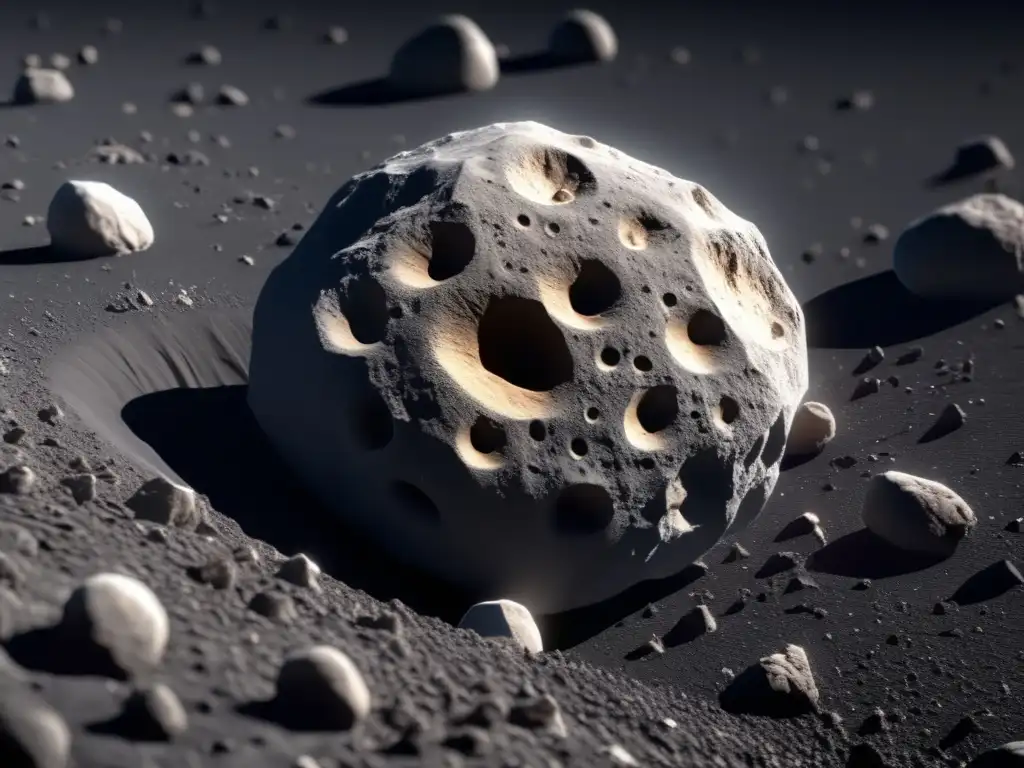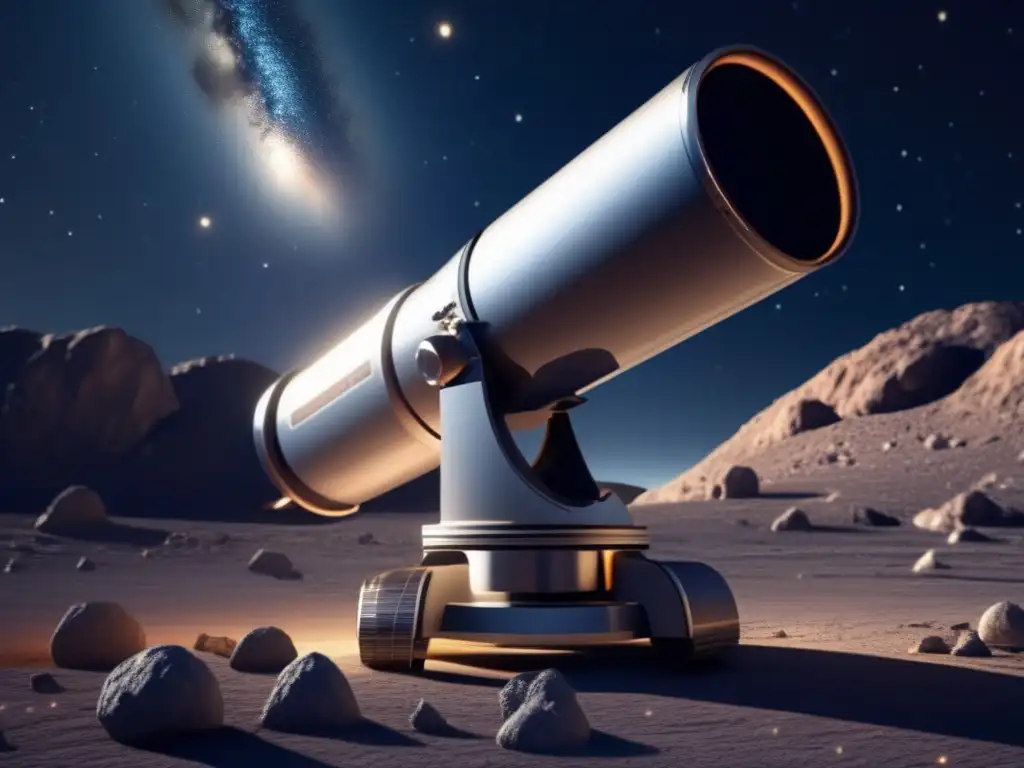The Challenges Of Asteroid Observation And How To Overcome Them

Introduction
Asteroids, the celestial bodies that orbit the sun and are made up of various elements and compounds, have long fascinated astronomers and space enthusiasts. These rocky remnants from the early days of our solar system offer valuable insights into the formation and evolution of our universe. However, observing and studying asteroids present unique challenges that must be overcome to unlock their secrets. In this article, we will explore the challenges associated with asteroid observation and discuss the strategies scientists employ to overcome them.
1. Atmospheric Distortion

1.1 Telescope Limitations
One of the most significant challenges in observing asteroids is the distortion caused by Earth's atmosphere. The Earth's atmosphere acts as a lens, causing the light from celestial objects to scatter and blur. This effect hampers the clarity and precision of observations made from the ground using telescopes. To mitigate this challenge, scientists often rely on space-based telescopes, such as the Hubble Space Telescope, which are free from atmospheric interference and provide sharper images.
1.2 Adaptive Optics
Another approach to tackle atmospheric distortion is the use of adaptive optics. Adaptive optics systems actively adjust the shape of the telescope's mirrors in real-time to compensate for the atmospheric turbulence. By continuously correcting for distortions, scientists can significantly enhance the resolution and fidelity of observations, even with ground-based telescopes. This technology has revolutionized asteroid observation by allowing for clearer and more detailed images.
2. Fast-Moving Targets

2.1 Tracking Systems
Asteroids are notorious for their swift movements across the sky, making it challenging to accurately track their positions and trajectories. To overcome this challenge, astronomers use sophisticated tracking systems that employ advanced algorithms and data processing techniques. These systems combine observations from multiple telescopes and precisely calculate the asteroid's path, enabling scientists to predict future positions and potential impacts with greater accuracy.
2.2 Radar Imaging
In addition to optical observations, radar imaging offers a powerful tool for studying asteroids. Radar allows scientists to obtain detailed information about an asteroid's shape, rotation, surface features, and even its composition. By emitting radio waves and measuring the reflected signals, radar observations can provide critical insights into the physical properties of asteroids. This technique is particularly useful for distant or small asteroids that are difficult to observe optically.
3. Limited Accessibility

3.1 Space Missions
Another significant challenge in asteroid observation arises from the limited accessibility to these celestial objects. They reside in the depths of space, often far from our reach. However, space missions have played a pivotal role in overcoming this challenge. Probes, such as NASA's Dawn and Japan's Hayabusa missions, have successfully reached and orbited asteroids, providing invaluable data and samples for analysis. These missions offer close-up views and on-site measurements, enabling scientists to study asteroids from a unique perspective.
3.2 Remote Sensing
When direct physical contact is not possible, remote sensing techniques become essential. Scientists use various remote sensing instruments, such as spectrometers and thermal imagers, to gather valuable information about asteroids from afar. These instruments allow them to analyze the asteroid's composition, temperature, and surface characteristics. By interpreting the data obtained through remote sensing, scientists can gain insights into the geological history and mineralogy of these fascinating celestial bodies.
Frequently Asked Questions

-
Q: How do scientists determine the size of an asteroid?
A: Scientists determine the size of an asteroid by analyzing its brightness and the amount of sunlight it reflects. This information, combined with distance measurements, allows them to estimate the asteroid's size and shape.
-
Q: Can asteroids be used as resources for future space missions?
A: Yes, asteroids hold potential as sources of valuable resources such as water, metals, and minerals. Future space missions may aim to extract and utilize these resources to support human exploration and colonization efforts.
-
Q: Are there any systems in place to detect potentially hazardous asteroids?
A: Yes, several observatories and organizations, such as NASA's Near-Earth Object Observations (NEOO) program, continuously monitor the skies for potentially hazardous asteroids. These systems provide early warnings and enable scientists to study and assess the potential risks associated with these objects.
-
Q: Can asteroids collide with Earth?
A: Yes, asteroid collisions with Earth have occurred throughout history. While most small asteroids burn up in the atmosphere, larger ones can cause significant damage upon impact. Understanding and tracking asteroids are crucial for developing mitigation strategies and protecting our planet.
-
Q: How do astronomers classify different types of asteroids?
A: Astronomers classify asteroids based on their composition, specifically their spectral characteristics. The classification system categorizes asteroids into groups such as carbonaceous, silicate, and metallic, providing insights into their origins and evolutionary paths.
Conclusion
Asteroid observation presents various challenges, from atmospheric distortion to fast-moving targets and limited accessibility. However, through technological advancements, space missions, and innovative observational techniques, scientists have made significant progress in overcoming these obstacles. The study of asteroids not only helps unravel the mysteries of our solar system's history but also contributes to our understanding of potential cosmic threats and paves the way for future space exploration. By persevering through the challenges, we can continue to expand our knowledge and appreciation of these captivating celestial objects.
We encourage readers to share their thoughts and engage with www.asteroidrealm.com, whether by subscribing, sharing the article on social networks, or leaving comments. Thank you for your time and attention.
Additional Resources

For those interested in delving deeper into the topic of asteroid observation, here are some additional resources:
- Asteroid Observation Techniques: A Comprehensive Guide
- Advancements in Adaptive Optics for Asteroid Observation
- NASA's Asteroid Mission: Exploring Near-Earth Objects
- Asteroids: The Building Blocks of the Solar System
 The Relationship Between Asteroid Observation And Astrophotography
The Relationship Between Asteroid Observation And Astrophotography How To Incorporate Technology In Asteroid Observation
How To Incorporate Technology In Asteroid Observation Exploring The Solar System: A Guide To Observing Asteroids
Exploring The Solar System: A Guide To Observing AsteroidsIf you want to discover more articles similar to The Challenges Of Asteroid Observation And How To Overcome Them, you can visit the Telescopes and Asteroid Observation category.
Leave a Reply

Articulos relacionados: